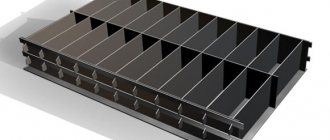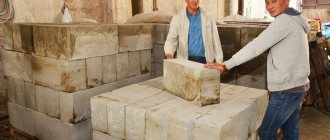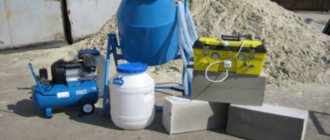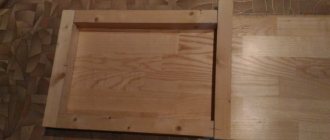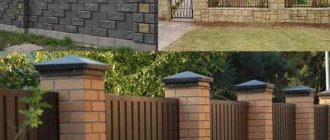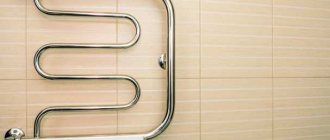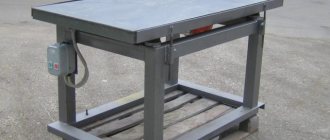In recent years, there has been a trend that people are increasingly resorting to self-construction. For some, this is saving money, while others are doing this at the behest of their soul.
Foam concrete is now becoming one of the popular materials.
It is not difficult to make it with your own hands and, in addition, the material has a number of undeniable advantages. The main thing in such work is compliance with safety precautions and work technology. This article will tell you about the properties, technologies and necessary equipment for production.
Foam concrete production technologies
To decide how to make foam concrete with your own hands, you need to study two technologies for this process, with and without the use of a foam generator:
The first method is considered classic and involves the presence of a special container in which cement, sand and water are forcibly mixed with a pressure mixer. At the same time, a foaming agent solution is prepared in the foam generator, which is then added to the container with concrete.
After thorough mixing to a homogeneous consistency, foam concrete is ready for use. The second type requires foam concrete equipment such as a cavitation unit, which operates without a foam generator. All required ingredients are placed immediately and mixed in a special container. The solution is supplied from the installation under excess pressure arising in the mixer.
In order for foam concrete to harden faster, it is allowed to add appropriate components to the concrete solution, for example, calcium chloride at the rate of one and a half percent by weight of cement.
What is needed to make foam concrete
To produce this building material you will need:
In order to obtain a homogeneous material, you will need to sift and sort the ingredients. Therefore, to obtain high-quality foam concrete, it is necessary to have a vibrating sieve. If a pressure unit is used in production, it is necessary to have a compressor. If technology without the use of a pressure unit is used for production, a concrete mixer will be needed. If foam concrete will be used for the production of foam blocks, it is necessary to purchase ready-made forms for them or make them yourself. If the foam concrete solution is planned to be poured using monolithic technology, you will need boards for installing the formwork. A foam generator for foam production. In technology using a foam generator, a foam concentrate will be required.
This is a special material with high stability in cement mortar. This quality allows you to transport the finished mass to the required distance without destroying the structure of the material. It can be purchased in the form of an industrial concentrate or made with your own hands. A complex such as a pressure unit will significantly facilitate the work and reduce the amount of equipment.
When using it, you do not need a foam generator; the ingredients are mixed in the built-in activator. This process is performed under high pressure, so when the solution is unloaded, the air pores swell even more and the mixture becomes more porous. Such equipment for foam concrete makes it possible to deliver mass to the site of construction work and at the same time produce material with density parameters up to 1200 kg/m3. Water, sand, cement. Gloves to protect hands and a mask for working with bulk materials.
Self-construction of foam concrete molds
If we are talking about monolithic pouring, then the formwork is made in the traditional way.
To produce foam blocks from mortar for laying, you can independently assemble molds for pouring. To speed up the work, several forms are made; the size of the cells is calculated by the master manually, based on the required construction parameters. If a non-standard shape of blocks is required, then a special form is either made for them, or the finished block is processed with a special tool.
At home, as a rule, two molds of forty cells each in one layer are enough for better drying. For their manufacture, plywood or metal strips are used.
When installing the forms, it is important not to make a mistake in the dimensions and, when calculating the length of the box, take into account the thickness of the strips used for the partitions.
The form is performed in the following sequence:
- Calculation of the parameters of the bottom, as well as the length of the strips that will be located along the length and width of the cells. Form the bottom. Attach the partitions to the bottom and to each other with fasteners, and corners and spacers cannot be used, since the shape of the finished products will be damaged. Fasteners must be selected in accordance with the material used to make the forms. When producing wooden or plywood forms, you will need to cover them from the inside with polyethylene: the foam concrete solution will not be absorbed and the blocks will be easier to remove.
Homemade equipment
Of course, the price of foam blocks made at home is much lower. And the materials used absolutely meet our requirements, and the sizes of the blocks are exactly what we need. A more economical option is to make a vibrating table and molds yourself.
Homemade machine
Vibrating table - equipment for home block production.
We make a vibrating table from 2 iron platforms 0.5 cm thick, springs from a car, a moped, a powerful fan and a working electric motor.
Homemade vibration table
- We weld springs vertically to the corners of the platform.
- We will install a vibration platform on them and weld it parallel to the first one.
- We will attach the motor to the middle between the platforms, to the bottom of the upper platform. To do this, we will weld bolts on individual sockets of our engine so that it is at the bottom.
- Now let's attach the pulley to the motor hub, and the weight to the pulley.
The table is ready, and it’s worth checking: turn on the electric motor - the table vibrates!
Forms for foam blocks
Scheme of a multi-place metal mold for making blocks
You can buy ready-made plastic molds. This will not at all undermine the profitability of cinder block production, since we will then use them as household containers.
You can make 3 types of molds for blocks.
Using ready-made metal forms
Using ready-made metal forms for foam concrete greatly simplifies the construction process, because you will not need to spend time making your own form. But in this case, you need to take into account that you will have to spend some money on the purchase.
When using a standard form, blocks of certain sizes are obtained - 300x600x200 mm; band saw machines are used to adjust them in order to obtain blocks of special designs.
Before using the molds, they are lubricated with a special composition that does not contain oil.
The use of ready-made metal molds has its advantages:
- Their simple disassembly allows you to quickly remove the finished blocks. Thanks to the precise geometric shapes, the manufactured blocks are smooth and identical. Metal structures have a dismountable-assembled system, so they do not take up much space during transportation. Metal molds are durable. Thirty blocks are poured into the mold at the same time, which requires 1.08 m³ of foam concrete.
Cooking process
Making foam concrete at home can be represented in several stages:
- preparing a solution from cement and sand; preparing a working mixture of a foaming agent; producing a mass of foam concrete; pouring the material into molds for foam blocks or formwork.
To produce foam concrete at home, as a rule, proportions of raw materials are used that make it possible to obtain a medium-density solution. The ratio of ingredients is as follows:
- one part sand; from one to one and a half parts cement; water to obtain the desired consistency; foaming agent in the form of a concentrate in an amount of three to four grams per kilogram of cement.
When forms or formwork are laid out and prepared on a cleared site, foam concrete is poured into them. The building material, if possible, is processed with a vibrator for better shrinkage.
The solution is again added to the resulting voids and settled. Then the filled molding structure is left for the foam concrete to set and you can move on to the next one. After the foam concrete has dried, the form or formwork can be disassembled.
Drying of blocks in molds must be carried out for at least two days at a temperature from +50°C to +60°C.
Principle of operation
A do-it-yourself installation for the production of foam concrete is assembled after the principle of its operation is clarified. A foam generator is a special device that allows you to obtain the required amount of foam.
The foam concrete installation is assembled from three modules:
- The part used to form the foam composition and its transportation.
- Automatic dosing of the components is carried out by a control element.
The production of foam concrete at home begins with the solution entering the foam generators. Here it is mixed with the required amount of air.
Builders consider the optimal productivity to be five hundred liters per minute.
The installation is complemented by a mixer connected to the foam generator. The element is replaced with a shovel or other device. In this case, you will have to manually mix. The concrete mixer allows you to automatically mix the bleaching components for the solution.
A homemade installation for foam concrete will be completed correctly if the nuances are taken into account during its creation. At the first stage, you will need to select a brand of concrete. You should also buy high-quality sand and the mixture used to form foam. It is recommended to carry out the following calculations in advance:
- To obtain the surface area of all walls, multiply the height, width and perimeter of the room.
- The perimeter is the sum of all the lengths of the walls. It is obtained by summing their values.
Making concrete mortar
To make foam concrete with your own hands, first prepare a cement-sand concrete mixture according to the classical scheme:
- To produce concrete, you will need high-quality Portland cement M400 or M500, free of additives and impurities, with a high grinding fraction. The mixture must contain pure quartz sand. It should not contain inclusions of clay, which will impair its mixing with cement, and be resistant to cement alkalis. Ordinary tap water is suitable for dissolving the components, since it does not contain impurities of salts and acids. When the required amount of ingredients is measured out, they are loaded into a concrete mixer and stir until a uniform concentration is obtained.
Solutions used in the manufacture of foam blocks
Table of foam concrete indicators
Cement of any grade from 200 to 600. Dosages - a great variety.
For a dense, heavy block
- Cement - 2.4 c; sand - 19.5 c; water - 110 liters.
- Cement - 2 quintals; sand - 9.2 c; crushed stone - 9.8 c; water - 100 l.
- Cement - 2.3 c; broken brick - 9.9 c; sand - 5.4 c; water – 100 l.
- Cement - 2.5 c; expanded clay - 7.2 c; water - 90-130 l.
- Cement - 2 quintals; coal or shale slag - 9.6 c; water – the same 90–130 l.
- Cement - 2.6 c; sawdust - 1.5 c; sand - 11 c; water - the amount already indicated above.
For a light block
The ratio of cement and fillers is 1:8 and 1:9, respectively, but increasing the amount of cement makes the blocks stronger.
Profitability
- For production, a 380 V power supply is required; to produce blocks from a mixture of 160 liters we will spend 5 kW.
- 1 cubic meter of foam concrete will require 2.5 kW for 30 minutes. Let's take into account the cost of cement; all other ingredients are only a quarter of the cost of cement.
Foaming agent working mixture
To produce foam concrete with your own hands, you can use commercially available ready-made synthetic industrial foam concentrates.
When using concentrates to prepare a working solution, they are mixed with water. To calculate the required amount of foaming agent, it should be taken into account that for 1 m3 of concrete solution you will need a concentrate from 0.25 to 1.2 liters, depending on the density parameter of the concrete that needs to be made.
But there is also the opportunity to make this component yourself. It is worth noting that this option is only suitable for use in conjunction with a foam generator. To make your own foaming agent you will need:
- rosin - 1.0 kg; wood glue - 0.06 kg; caustic soda - 0.15 kg.
The components are well ground, the mixture is heated and stirred until smooth. Now this solution can be added to the concrete mixture.
Foam concrete: characteristics and properties
Foam concrete has some properties that can be considered its advantages over a number of other building materials:
High quality thermal insulation. Thanks to the air-filled cells, the material has high thermal resistance.
In winter, this quality saves heating costs by about 25%. Good fluidity, allowing easy and high-quality filling of molds. Reliability. Foam concrete is not affected by atmospheric factors and chemical influences. This is a practically ageless material that is as strong as stone, does not rot, and is not afraid of dampness. Excellent strength characteristics.
The density of foam concrete is 400-1400 kg/cm³, allowing it to withstand compressive loads in the range of 10-100 kg/cm³. This increased characteristic makes it possible to use this material in the construction of objects with a lower volumetric weight, which leads to an even greater increase in the thermal resistance of the walls. Unlike materials such as foam plastic and mineral wool, foam concrete does not lose its qualities over time. They only get better due to the long maturation of this material: after four months its strength increases by one and a half times, and after a couple of years - by more than two and a half times compared to month-old cellular concrete. Maintaining an optimal microclimate.
Foam concrete, reviews confirm this fact, is distinguished by good air permeability, allowing the walls to breathe. Environmentally friendly. It does not evaporate harmful substances, as it is made from natural raw materials. According to this indicator, foam concrete is second only to wood.
For example, the environmental friendliness index for brick is 10, for cellular concrete – 2; bricks – 10; wood – 1; expanded clay blocks - 20. Excellent sound insulator. The material absorbs sound well without reflecting it, especially low noise. Fire safety. The first degree of fire resistance allows a fifteen-centimeter foam concrete wall to protect the room from fire for four hours. The large sizes of the blocks ensure ease and speed of installation.
Easily processed with cutting tools. High efficiency. The accuracy of geometric dimensions makes it possible to place blocks on glue, avoiding cold bridges, which saves the cost of plastering and additional insulation. The lightness of the blocks allows you to save on the foundation and floors, and are easy to transport.
- Date: 03/01/2015 Comments: Rating: 44
A do-it-yourself foam concrete installation is made using a certain technology. The final product of foam concrete is a foam block, which consists of the following components:
- cement; water; sand; foaming agent.
Foam generator diagram.
Home-made foam concrete is cheaper than its factory-made counterpart. Cement is considered the most expensive component of foam concrete, so the cost of the final product depends on its choice.
Design features
An installation for the production of foam concrete can be easily made at home.
First you need to find out the principle of its operation. The foam generator is presented in the form of a device used in the production of foam, which is the basis for foam concrete. The unit is presented in the form of 3 modules responsible for its operation:
- foam concentrate and mixture transport modules (to produce foam); control element (providing automatic dosing).
Scheme of foam concrete production: 1 - container for foaming agent solution, 2 - service platform, 3 - compressor, 4 - foam generator, 5 - mixer, 6 - pressure hose, 7 - tiered molds.
The concrete solution enters the foam generator, where it is mixed with air (under pressure), forming foam concrete. The device in question can have a productivity of up to 500 l/min.
The concrete mixer is an additional tool to the foam generator. The first element can be replaced with a regular spatula or another object that is used for manual mixing of mixtures. The concrete mixer is designed for mixing the components of the solution.
The last installation is made by hand, taking into account all the nuances of foam concrete production. Pre-select a brand of concrete, buy high-quality sand and a special mixture for foam.
Blocks can be made at the stage of arranging the foundation of the house. Foam concrete is used for this. To ensure optimal material consumption, the following calculations are made in advance:
- The volume of the walls is obtained by multiplying their height, width and perimeter. The perimeter of the structure is calculated by summing the lengths of each side.
Return to contents
To independently manufacture a foam concrete production plant, you will need to make a drawing. A homemade foam generator should be presented in the form of a simple but reliable design that can provide high quality and density of foam.
A home-made installation, from a design point of view, operates on the principle of paired valves: control valves set the density of the foam, and shut-off analogues serve to shut off the system. The foam parameters are selected once using the first elements. In the subsequent use of a homemade installation, only shut-off analogues are regulated.
Foam concentrate diagram.
The DIY foam generator is equipped with a turbulent mixing chamber. A solution is supplied to it.
After mixing the mixture with air, the composition (under pressure) passes through a nozzle, truncated on both sides. As the solution enters, it contracts, and as it exits, it expands. In the latter case, the flow rate of the mixture increases significantly.
All turbines operate according to this scheme. The mixture coming out of the nozzle enters the foam cartridge. Foam is generated in this section of the installation.
If you replace the nozzle in a homemade foam generator with a washer-jet, the efficiency of the device will decrease by 40 points. This design can be used temporarily.
For continuous production of foam concrete, it is recommended to manufacture appropriate installations with a Laval nozzle. In order for the foam generator to function normally, it is recommended to purchase an air compressor with a capacity of 0.5 m³ and a pressure of 6 A. The foam concentrate is first diluted in a container with a volume of 100-200 liters.
The resulting composition is fed into the device using a pump.
If large volumes of work are envisaged, then the last unit must have a receiver. The pump, which provides the foam generator with a pressure of 2 A, helps produce 300-500 liters of foam per minute. If an air compressor with a 100-300 liter receiver, a capacity of 1 m³ and a pressure of 6 A is used, then the installation productivity will increase to 600 liters per minute.
Return to contents
Diagram of a mixer with a foam generator.
The installation for making foam concrete with your own hands is assembled using the following materials and tools:
- hoses; sheets of metal; pump; compressor; welding; adjustable and shut-off valves; pipe.
The production of foam blocks involves the use of foam, which is introduced into the concrete solution.
The mixture is stirred. The characteristics of the final product depend on the density and quality of the foam. A DIY installation must ensure proper mixing of the emulsion, water and air.
It will take some time to manufacture simple equipment (foam generator) for the production of foam concrete.
Air will be supplied to the closed vessel using a conventional vacuum cleaner. The resulting installation is not capable of regulating the consumption of raw materials. Assembly of the unit begins with a vessel into which solution and air will be supplied.
Diagram of a turbulent foam generator.
For the reservoir, you can use any cylindrical iron container.
Raw materials with air are fed into the container continuously. To do this you will need a hose and a submersible pump. Compressed air will be supplied to the vessel from the compressor through the 2nd hose.
The pressure in a homemade installation will be regulated by a valve. To increase the pressure in the system, the last element is blocked more strongly. Water is supplied in the same way.
The installation for foam concrete is equipped with a nozzle, which is mounted separately in the housing.
There must be a channel inside this unit that first compresses and then expands. The composition exits the nozzle and enters the foam cartridge. The latter element plays an important role in the formation of foam.
It is filled with nets or hedgehogs for washing dishes. It is made from thin wire. The mixture from the nozzle falls onto a filter, which can be purchased at a plumbing store.
Each connection of the device needs to be sealed. A metal pipe of any diameter is used as legs. The product is welded to the installation body using a welding machine.
Return to contents
Experts recommend making your own installations for producing foam concrete, taking into account some nuances:
- The ratio of depth and inlet diameter of the nozzle should be 1:1 (more than 30 mm). The ratio of depth and outlet diameter of the nozzle should be 3:1. The diameter of the central hole is 10 mm.
If it is necessary to make an installation with a capacity of 150-200 liters, then the diameter of the foam cartridge should be 30-40 mm, and the length should be 600-800 mm.
If the productivity should be in the range of 350-500 liters, then the diameter of the foam cartridge should be 50-80 mm, and the length should be 600-800 mm. The parameters of the remaining parts of the installation are selected and adjusted in each case individually.
Stainless steel stacks intended for cleaning dishes are used as a filler for the foam cartridge. You can buy them at a hardware store.
It is recommended to purchase fine wire mesh (rather than spiral mesh). The body of this element along its entire length is stuffed with rolled mesh. At the exit, a ruff with a washer is screwed on.
The last element prevents the mesh from flying out of the foam cartridge (under high pressure). This filler has a long service life. The foam concrete production plant is ready for operation.
For independent construction, which involves the use of foam concrete, it is not at all necessary to spend money on expensive equipment. It is quite possible to build a foam generator for foam concrete with your own hands.
Foam blocks are made from liquid concrete, to which foam made from chemical or biological components is added. The production of this foam is the task of this equipment.
Foam enriches concrete with the necessary amount of oxygen, which gives the finished product a number of advantages. In particular, foam blocks have low thermal conductivity, fire safety, low ability to absorb moisture and good air permeability. In addition, this material is convenient to work with.
Useful little things
As you know, in any business there are no trifles, but, nevertheless, you should pay attention to a number of significant points.
Equipment for the production of foam concrete is very sensitive to the quality of cement and sand. Therefore, ensuring production with proven grade 500 Portland cement and enriched quartz sand is a necessary condition and a guarantee of quality.
Quartz sand, enriched even using primitive technology, significantly improves the quality of the commercial block already at the preliminary stage of gaining strength
An equally important condition is the use of high-quality additives. In particular, to ensure the frost resistance of the finished block, it is necessary to use the BIO-NM modifier based on the S-3 concrete plasticizer. Additional air entrainment into the mixture mass can be achieved by introducing aerating additives BIO-Lux, Siplast, PVD-3 into the barrier mixture.
On your own
If you have enough equipment and skills, then DIY foam concrete installation is a viable option. You can learn more about the basic principles of manufacturing and the technical details of the process in the video in this article. It can also serve as a kind of instruction.
Home-made samples replicate the basic industrial-type structural designs
Separately, I would like to say that a homemade installation can seriously reduce such a significant indicator as the price of the product. A do-it-yourself installation for the production of foam concrete requires, for the most part, metal cutting, welding, turning and milling operations, mechanical assembly work for the installation of the finished product, its start-up and commissioning.
Implementing a reliable bearing assembly is a difficult task for a homemade designer
Particular attention should be paid to such an important unit as a pressure unit for producing foam concrete with your own hands. The bearing assembly must be designed to operate under conditions of irrational distribution of radial load at increased speeds of the mixer container, and under conditions of increased pressure in its cavity.
An example of the implementation of an over-budget, but nevertheless workable solution
Domestic manufacturers
In conditions of high exchange rates of major currencies, consumer attention is focused on domestically produced products.
The most common are:
- installation for the production of foam concrete bass 130;
- in the southern regions, the “strom foam concrete 250” installation has become widespread;
- The installation for the production of foam concrete “PBS 2 06” is also gaining popularity.
The quality and production culture of domestic mechanical engineering are well known. Therefore, before purchasing a unit, it will be useful to observe its operation in typical production conditions and communicate with the personnel operating it.
Operating principle and features of the foam generator
Making the unit yourself is quite simple and justified from an economic point of view. If everything is done in accordance with the recommendations, the result will be a device capable of producing high-quality foam, but at the same time its cost is several times cheaper than a factory foam generator.
The system valves work in pairs.
Some regulate the density of the composition, while others block the system. Control valves are set to a certain value, after which you can forget about them - in the future you can only use the shut-off valve. The design consists of three functional units. One of them supplies the solution, the second is necessary for the formation of foam; the third doses the resulting substance.
The harmonious operation of all components of the device is necessary to obtain high-quality and effective results.
- The principle of operation of a self-built installation is the same as that of a factory unit. The supplied foaming agent solution is combined with the air flow, after which it passes through a nozzle with double-sided truncation under high pressure. From the inlet (where the solution is compressed) to the outlet (where the solution expands), the flow receives significant acceleration and, upon entering the cartridge, is converted into a foam composition.
It is necessary to equip the structure with a compressor capable of creating a pressure of 6 atm.
In the absence of such an element, it is possible to supply the solution using a conventional pump, but this option is only suitable for small-volume work. Using a homemade foam generator during construction and repair work, it is possible to generate foam at a speed of up to 500 liters per minute. The installation, assembled in accordance with the recommendations and rules, will allow you to obtain a high-quality solution that fully complies with the technology.
Foam generator
Using this piece of equipment, it is possible to convert the solution into foam. Builders with experience agree that it is better to buy it ready-made rather than do it yourself. A foam generator or porosizer for foam concrete is compiled using the following instructions:
- Prepare a large and airtight container. For example, it is quite possible to use a barrel.
- Water and a special substance are placed inside. Using the latter, foam will be obtained.
- Connecting the compressor to the bottom of the unit. You will need to make a special outlet hole at the top.
- It is convenient to regulate the supply of substances using a special valve.
- The outlet is connected via a tee. A second valve will also need to be installed on the air supply side.
- Drawings of equipment for the production of foam concrete contain two outlets. Each of them must have a valve. In this case, it will be possible to correctly regulate the supply of oxygen and fluid.
- According to the instructions, the mixture passes through the grates and then enters the compartment. Through the process it is possible to form foam. A special nozzle must also be installed at the outlet of the triple distributor. If the installation was done at home, then a muffler from the car is used in this capacity. A lattice or other porous material must first be introduced into its structure.
A high-quality compressor can also be obtained from a vacuum cleaner. Its power is enough to perform all manipulations. The container in this scheme acts as a receiver, and the pressure unit for the production of foam concrete functions in the required volume.
Components of a foam generator
To ensure the operation of the unit, according to the technology, it must have a compressor, mixers for foam and concrete composition, an element for dispensing and pouring the solution into molds, as well as a pump for pumping the composition. These are the main elements that form the apparatus; in addition to them, there may be other mechanisms and elements.
To produce a large volume of construction raw materials, it is possible to construct a foam generator from a combination of devices of the same type.
The power and other performance characteristics of the unit must ensure continuous operation at each stage of the process. The simplest option involves assembling an installation based on three components: a foam generator, a concrete mixer and a compressor. Often such a unit is used to produce mortar directly at the time of construction for pouring structures.
Correlation of parts parameters
When assembling the unit, it is important to maintain the necessary ratio between some of its components. Taking into account the decrease in the diameter of the spiral when it is pulled out, it is necessary to ensure a difference between the diameters of the outer ring and the pipe of 12-15% (the diameter of the ring is larger), as well as a difference between the diameters of the ring inside and outside - 20%, in favor of the outer diameter. This difference provides optimal ratios for pipes with different parameters.
Compressor
Compressed air is required to obtain a mixture with the required properties. It is obtained through the operation of a compressor. The mechanism involves the generation and supply of air with excess pressure. Its strength directly depends on the power of the installation. There are several work schemes that allow you to obtain foam concrete. An installation for the production of foam concrete may have one of the following types of compressor:
- Rotary screw.
- Rotary vane.
- Piston.
How to make an installation for the production of foam concrete yourself directly depends on the chosen work option. Additionally, compressors differ in performance, pressure, and compression medium. They are stationary or mobile. The latter option is popular, because it is used on construction sites of any type. Its characteristics satisfy the needs of workers.
When choosing a compressor, it is necessary to evaluate its ability to provide the installation with the required amount of air. The BAS series uses devices that additionally include a receiver. When choosing a unit, attention is paid to its power and overall labor productivity. If the compressor fails, the duration of operation will directly depend on the total volume of air. The indicator plays an important role in eliminating pulsation. They occur when the air pressure is not supplied correctly.
You can make installations of varying power. For example, consider the parameters of the BAS settings in l/min:
- The installation for foam concrete BAS 130 makes 200. The volume of the receiver is 30 l.
- BAS 200 – 250. Receiver – 30 l.
- BAS 250 – 300. Receiver – 50 l.
- BAS 350 – 400. Receiver – 50 l.
When choosing a compressor, you should consider whether it will be used for other purposes. For example, you can use it to make a spray gun or other useful installations.
